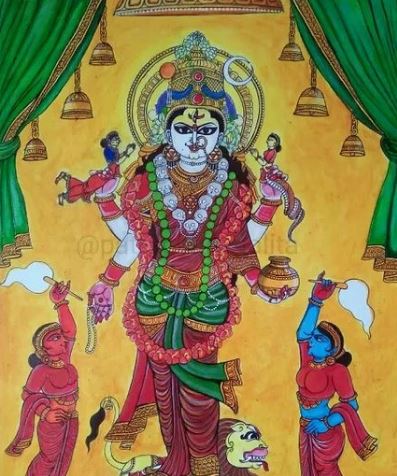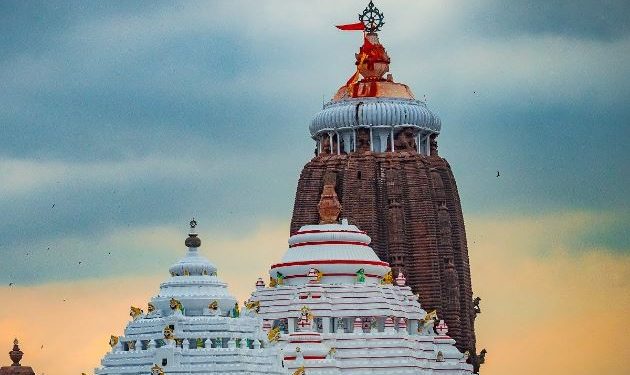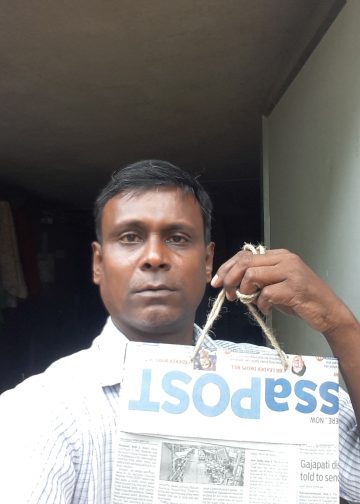It is generally acknowledged that ‘animal offering’ is restricted among the adherents of Vaishnavism. However, most readers will be amazed to learn about an animal sacrifice ritual linked to Srimandir.
Scholar Surendra Nath Dash, in his book ‘Srimandira Sabdakosha’, mentions that according to the terminology of the Jagannath temple, the practice is referred to as ‘Chheda Paka Niti’, which is carried out beside the well of Goddess Bimala during the three days of Durga Puja — Ashwina Shukla Saptami, Ashtami, and Navami.
Importance of Goddess Bimala
The shrine of Devi Bimala stands adjacent to the ‘Rohini Kund’ at the south-western corner inside the inner enclosure of Srimandir. The idol of the Goddess is carved from black stone.
Researcher Dukhi Shyam Behera, in his work ‘Srikshetra Jijnasa’, notes that Devi Bimala is revered as ‘Kaibalya Bhojini Vaishnavi’ (not to be given meat-based offerings). Throughout regular worship, except on the three designated days of Durga Puja, Devi Bimala is presented with the leftover offering made to Lord Jagannath. After this act of consecration, the Naivedya becomes Mahaprasad, which is then consumed by devotees.

Renowned scholar Dr Satyanarayan Rajguru, in his book ‘Sri Purusottama O Srimandira’, explains that the word Mahaprasad possibly stems from the expression ‘Maa-prasad’ (the offering of the Mother).
Rajguru further clarifies that under the Shakta doctrine, Lord Jagannath is perceived as Bhairava (a fierce avatar of Lord Shiva), and Devi Bimala is worshipped as His divine consort, Bhairavi.
According to Behera, the Goddess is given animal and fish offerings due to the fusion of Vaishnav and Shakta customs. Based on tantric understanding, Devi Bimala embodies the ‘ugra’ (ferocious) aspect during Durga Puja. Thus, an animal is sacrificed to satisfy Her.
Chheda Paka Practice
On the days of Saptami, Ashtami, and Navami during Durga Puja, two male goats are sacrificed each day near the Bakula Pindi close to the Bimala temple during the early morning hours. These six goats are contributed by six distinct institutions — Mahashrama Matha, Senapati Matha, Mangu Matha, Bada-Odia Matha, Biraharekrsuhnapur Mahajana, and Zamidar Khuntia — for the sacrifice ritual, which is executed in a confidential ceremony at the exterior boundary of the sacred shrine.
Behera also observes that on these sacred nights, fish from the revered Markanda temple tank is offered to the Goddess at midnight after the conclusion of the sibling deities’ nightly rest ritual or ‘Pahuda’. The fish offering is cooked in a makeshift kitchen and brought into Srimandir through the western entryway to the Bimala shrine. Those few who are permitted to observe the discreet ritual receive the ‘Bimala Parusa’ (offering).

Afterwards, the corridor leading to the Bimala temple is cleaned and purified with water upon completion of the esoteric ceremony.
All these observances are finalised before the primary sanctum of Lord Jagannath is reopened at sunrise.
According to tantric guidelines, during the Sola Puja (sixteen-day ritual) celebrated in the Bimala temple, female devotees are not permitted to view the deity.
PNN







































